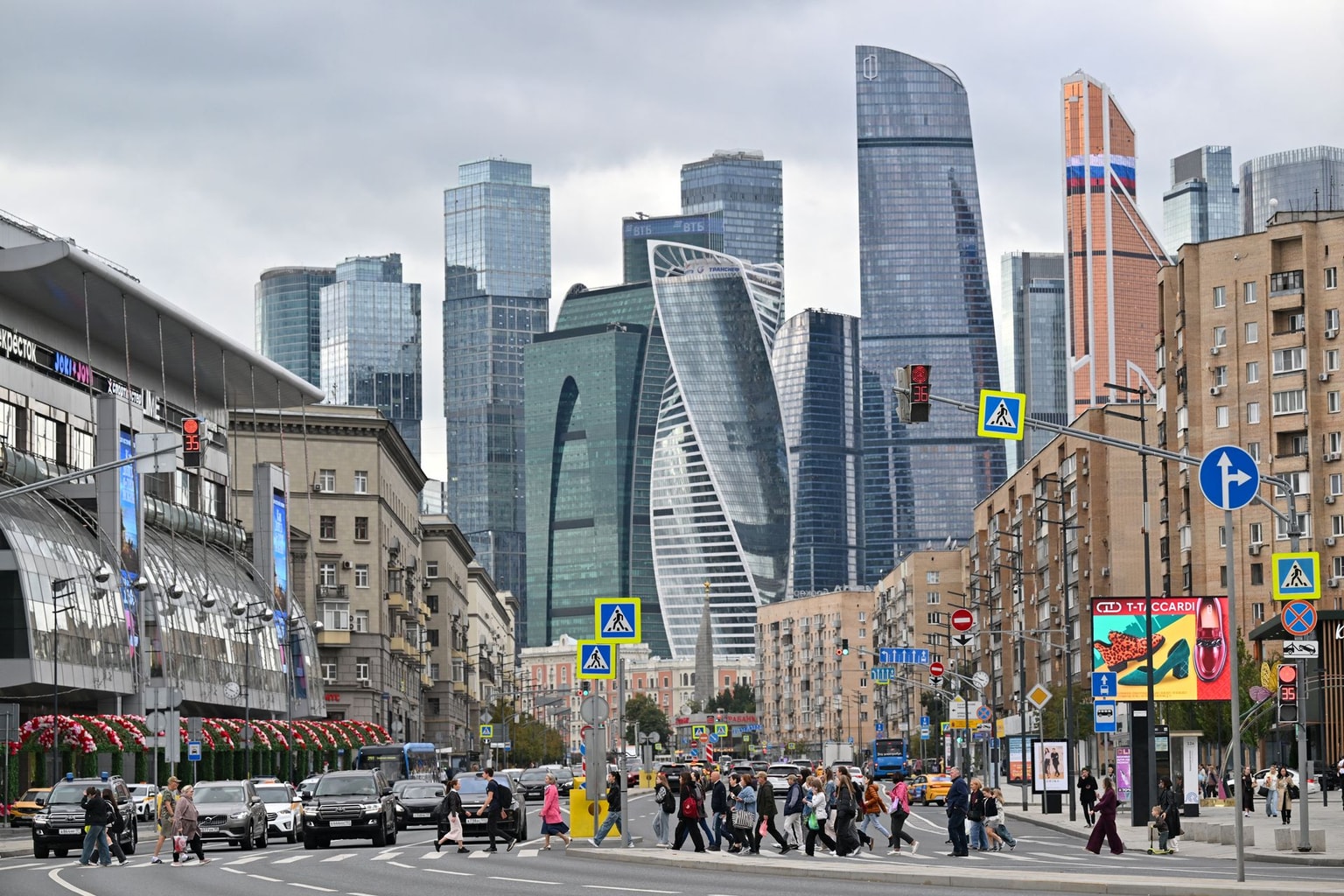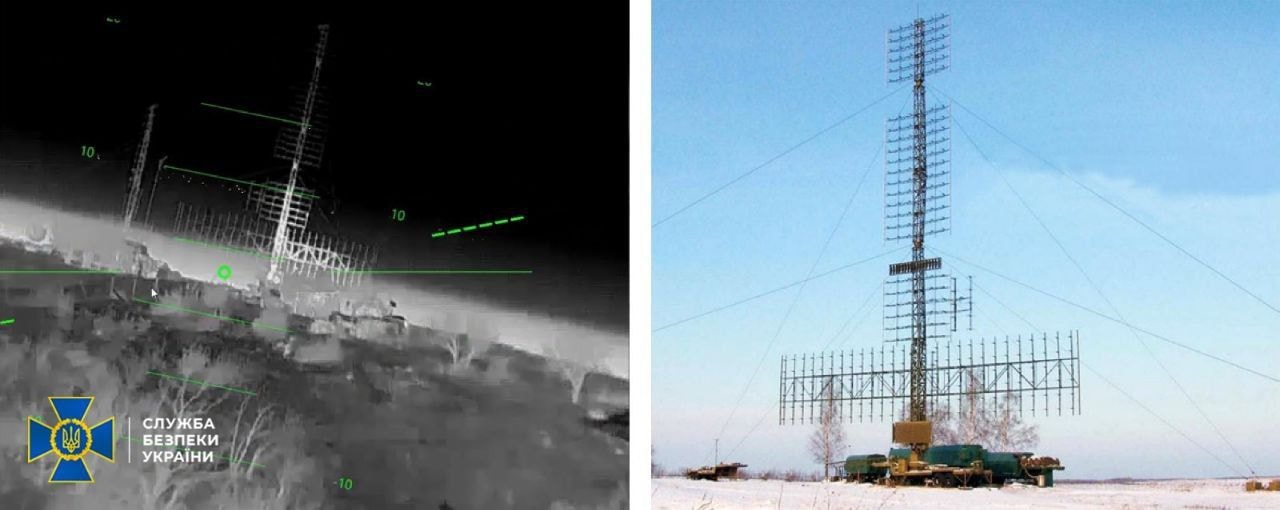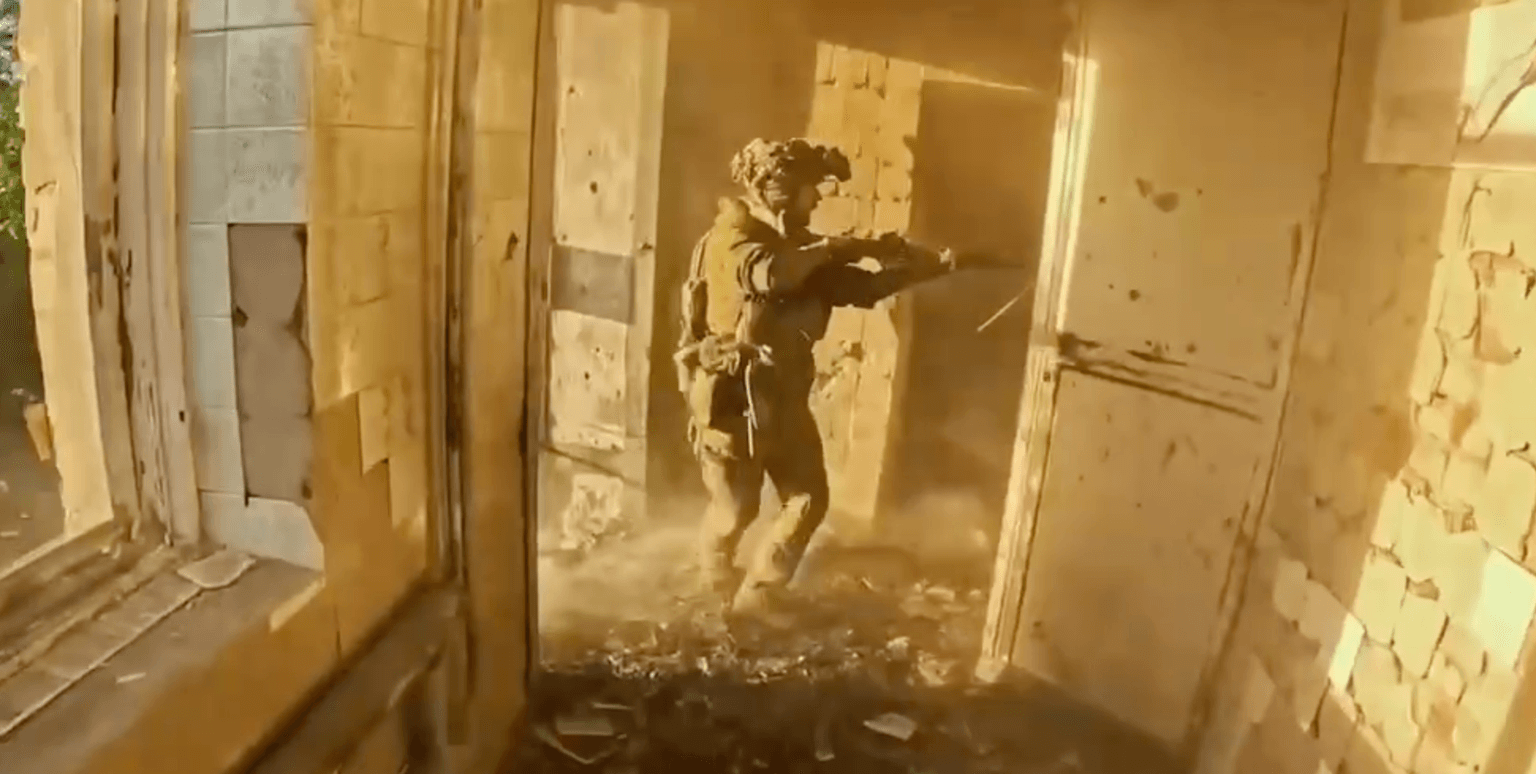
Our readers' questions about the war, answered. Vol. 9
Ukrainian servicemen of the 59th brigade mobile air defence unit fire toward a Russian drone from a sunflower field during an air attack near Pavlohrad, Dnipropetrovsk Oblast, Ukraine, on July 19, 2025. (Roman Pilipey/AFP via Getty Images)
Editor's note: We asked members of the Kyiv Independent community to share the questions they have about the war. Here's what they asked and how we answered.
Join our community to ask a question in the next round.
Why doesn't Ukraine retaliate when Russia bombs a civilian target such as an apartment building?
Answer: Ukraine does retaliate. Kyiv targets Russia's military targets such as airfields, oil refineries, and arms depots. Ukraine also now hinders Russia's air traffic by modeling drone routes in a way that forces Russia to close its airspace.
The problem here is that Russia is okay with committing war crimes, and Ukraine is obviously not. — Oleksiy Sorokin, deputy chief editor
Video footage shows the utter devastation of front-line Ukrainian cities and towns. My question is, what has happened to all the people who inhabited those towns? Are they still in Ukraine, just in a new location? Are they homeless?
Answer: People who had lived in eastern Ukraine now devastated by war, have a few options, all of them horrible — flee, die, or end up under occupation.
It sounds like fleeing is the obvious option here, yet it's worth noting that it's an impossible task for many Ukrainians. People with disabilities or the elderly population don't have the ability to move and start a new life elsewhere, while those who have the physical ability to move are often tied to their hometowns due to financial constraints.
According to the International Organization for Migration (IOM), there are 3.7 million internally displaced persons (IDPs) in Ukraine. An additional 7 million people have fled abroad. A number of foreign countries have been actively supporting Ukrainian refugees and financing programs meant to integrate the refugees into their country's workforce.
In Ukraine, government support programs for IDPs are poor and ineffective, which exacerbates the humanitarian crisis in the country. — Oleksiy Sorokin, deputy chief editor
A frequently used Russian propaganda talking point is that Ukraine is persecuting the Russian-speaking population in Donbas — how can I respond to this in conversation?
Answer: The "Russian-speaking population in Donbas" was murdered by the Russian troops. No one had done more harm to the Russian-speaking people than the Russian government.
Cities like Mariupol, Bakhmut, Lysychansk, Sievierdonetsk, Vuhledar, Kherson and Kharkiv were predominantly Russian speaking before the start of the all-out war. These cities were later bombarded, some to the point where nothing was left, by the Russian Armed Forces.
It's always important to understand that if Russia hadn't invaded Ukraine, these people would have been alive, no matter what language they would have chosen to speak. — Oleksiy Sorokin, deputy chief editor
Does Ukraine have what it needs to push Russia out of its territory, and if not, what would it actually take to accomplish that objective?
Answer: No, not at the moment, and not for the better part of two years, since Ukraine's 2023 summer counteroffensive failed to make a breakthrough. Attacking, especially conducting larger combined arms offensives, usually requires an advantage over the defending side in manpower and ammunition, and often that's not enough. Here, it is Russia that has (for now) a steady flow of single-use infantry soldiers while Ukraine is in a deep and chronic manpower crisis. Ukraine's strategy going forward should be defending as effectively as possible, making the price Russia pays in blood and equipment for each conquered Ukrainian kilometer as high as possible. Only then, if Russia overextends and faces a manpower crisis of its own, while Ukraine holds firm and even gathers strength and reserves, should we even begin to talk about large-scale counteroffensives. — Francis Farrell, reporter
Early on in the war a number of commentators including General Ben Hodges saw Crimea as the route for a Ukrainian victory. Has this objective changed?
Answer: The objective of Ukrainian victory hasn't changed, but since prospects of taking back all the occupied territories in the short term are next to non-existent, and we now have a Trump White House, the definition of what victory would mean has.
Victory is an end to the war with an independent Ukrainian state, in tight defense integration with NATO countries, that is militarily, politically, and economically strong enough to hold against (or ideally deter) a repeat invasion. But for all that to happen, Russia still has to be the one to decide to stop, so everything Ukraine does militarily is about making the price for Russia to continue really high. The most important part of this is always going to be the front line itself, which doesn't go through Crimea.
For a while back in 2023, when a lot of Russian targets, particularly expensive air defense, were being hit on the peninsula, there was a feeling that with enough long-range missiles, Ukraine could add another asymmetrical lever to that pressure, making the pearl of Russian President Vladimir Putin's conquests untenable for his military. Ultimately though, a long-range missile is just a very expensive way of attempting to blow up one thing far away, and just like Russia's almost daily long-range strike campaign against Ukraine hasn't forced Kyiv to change its strategic behavior, Ukraine's ability to hit Crimea with ATACMS or drones every now and then didn't either. — Francis Farrell, reporter
Is the destruction of the Kerch Bridge still an important priority of the Ukrainian forces?
Answer: Well they're certainly still trying — just last month the Security Service of Ukraine successfully attacked it and caused an explosion there, though it appears the damage was relatively minimal.
Previous, more spectacular attempts in 2022 and 2023 caused much more damage and were likely aiming to take the bridge out of operation as it serves as a logistics and supply route for Russian forces to the occupied Ukrainian territories.
But in response to these major attacks, Russia began relying more on ferries for military transport, and Ukrainian officials themselves said in June 2024 that managing to take it out now would have a far less significant effect on Russian logistics than it would have had before this shift.

So why do they keep attacking? For the symbolic value. The $4 billion project to build the bridge was a political statement designed to cement what Putin saw as one of his crowning moments — the annexation of Crimea.
Any Ukrainian attack, even a minor one, is a blow to this prestige. And if Ukraine gets the chance to really hit it and potentially take it down — perhaps with something like Germany's Taurus missile — it's a pretty safe bet that they'll take it. — Chris York, news editor
I keep reading about the need for investment in Ukraine. However, as an individual with only small amounts to invest, I don't know how best to do this. I have read about Pravo, however only U.S. citizens can make investments in Ukraine through this platform. Are there other approaches available to non-U.S., non-Ukrainian citizens?
Answer: Unfortunately, this is still a big issue in Ukraine, despite the government saying it wants to attract foreign investment. For small-time investors there's not much one can do, although Pravo plans to expand in the future, so keep an eye out there. Some Ukrainian companies, like Kernel, Ovostar, and IMC are also listed on the Warsaw Stock Exchange.
Many are growing frustrated with the lack of options when it comes to investing in Ukraine. In my opinion, the government needs to step up and present some clear paths. Until then, the best I can suggest for small-time investors is finding Ukrainian projects on Kickstarter. — Dominic Culverwell, business reporter
What is the Ukrainian parliament's role in deciding what outcome for the war would be acceptable?
Answer: Ukrainian parliament is not an independent institution, as the recent voting for two polar bills — one to dismantle the independence of anti-corruption institutions, the other to reinstate it — shows.
As a result, the only way Ukraine's parliament, controlled by President Volodymyr Zelensky's party, can be tied to any actual decision making is if the president attempts to shift responsibility for an unpopular outcome on this institution.
It is possible that Ukraine would be pressured into an unfavorable peace settlement and Zelensky might ask the parliament to vote on it. If the vote fails, this would give the president additional leverage to not take the unfavorable deal. — Oleksiy Sorokin, deputy chief editor

U.S. news reports state that the Ukrainian military suffers from a shortage of soldiers. Is this accurate?
Answer: Unfortunately, a shortage of soldiers — particularly among the infantry — has persisted throughout most of the full-scale war. Hundreds of thousands of men and women stood up to fight at the beginning of the all-out war. It's not the case anymore. While the Ukrainian military has about 1 million people serving in it, the portion of the servicepeople who are actually in combat is small, and the rest are working in administrative or bureaucratic positions. It is harder than ever now to find people willing to fill in the gaps left in front-line units following heavy losses. — Asami Terajima, reporter
Why does Russia insist on continuing the violence, attempting to take over Ukraine?
Answer: Because it can. — Oleksiy Sorokin, deputy chief editor
I understand the reasons not to disclose the military losses you have had during this long war, but would like to know some facts about the civilian losses.
Answer: It's very hard to calculate the actual civilian losses, since most of them took place in the territories that are now occupied by Russia.
According to the UN Human Rights Monitoring Mission in Ukraine, at least 13,883 civilians, including 726 children, and 35,548 injured, including 2,234 children. The UN adds only confirmed cases to the list, meaning the majority of casualties have been undocumented.
The conservative estimates place the number of civilian casualties in Ukraine under 100,000, with the bulk of the losses are alleged to have happened during the Russian brutal siege of Mariupol back in 2022. — Oleksiy Sorokin, deputy chief editor
I'd like to know how air defence around Kyiv is organized. Is it sufficient? Do they have enough ammunition? And are they prepared for the massive Russian attacks, which seem to continue?
Answer: Long story short, the air defense equipment for major Ukrainian cities, including Kyiv, is not sufficient. Since May, Russia has been launching more ballistic missiles against the capital, which are harder to intercept because of their speed and trajectory. More missiles and drones have been able to pass through Kyiv's air defenses.
Only the American Patriot systems can effectively shoot down incoming ballistic missiles, but there has been a severe shortage of interceptors. With the current political climate in Washington, it is difficult to predict how long Ukraine will continue receiving more to defend the civilians living in cities far from the front. If Russia ramps up its attacks even further, it will be more difficult to intercept the missiles and Shahed-type drones. Anti-drone units equipped with machine guns are working, but nowhere near as effectively as the Western-provided air defense systems.
The Air Force has previously reported that prestigious F-16 fighter jets were used to intercept Shahed-type drones, which, the experts I spoke to have said, is an extremely unfavorable choice that Ukraine was likely forced to make due to the shortage of missiles for air defense systems. — Asami Terajima, reporter

I would like to ask about Ukraine's interceptor drones. What do we currently know about them? Will a sufficient number be produced to counter the increased number of drones being sent by Russia each night? What success rate is Ukraine expecting from the use of these drones?
Answer: We've done several stories with a fair bit of information as to the current interceptor drones and what we know about them at the moment. From my reading, it is not beyond the wit of Ukraine to produce these at scale, though the engines necessary might end up a choke point for production.
Zelensky is touting something like 80-90% effectiveness for these drones, which seems overly optimistic. But Ukraine seems capable of making these fairly effectively. The problem seems to be basic logistics and deployment, especially because such interceptor drones have limited ranges and still require trained teams to operate them. You can't just drop a thousand of them a night in Kyiv along with a squad of operators and watch them guard the whole country. Shaheds come in from a wide stretch of the Ukrainian line and take varying routes to various targets, so distribution not just of drones but of the teams that can man them becomes as much of an issue as production. Better lock-on and potentially auto-targeting could fix this. — Kollen Post, defense industry reporter
What would it take for NATO to participate in the war?
Answer: It is hard to imagine any scenario under which NATO would join the war in Ukraine except for Russia openly launching an attack against one of its members — though NATO leaders are increasingly warning that this is a possibility in the coming years.
Previously, one feasible scenario would perhaps be Russia deploying nuclear weapons against Ukraine. This would be such a level of escalation that the U.S. would be pressed to intervene more directly, and the Biden administration reportedly did warn Russia that any use of nuclear weapons in Ukraine would lead to a U.S. military response. This seems much less likely under Trump, who seeks to disengage from the war.
NATO members have been extremely cautious when responding to any provocations, for example, when Russian drones or missiles cross into NATO territory during strikes against Ukraine. The strategy behind NATO's support for Ukraine is that helping Ukraine win will prevent a war between NATO and Russia. Joining the war directly would therefore go against this logic. — Martin Fornusek, senior news editor
Why are the EU countries so reluctant to act as independent states in matters related to sanctions on Russia?
Answer: While EU countries can impose sanctions unilaterally, Brussels doesn't really like it. The EU is all about unity, and unilateral decisions undermine that image. — Dominic Culverwell, business reporter
If Ukraine is abandoned by Washington, do you feel that Europe will step in to stop Putin?
Answer: We could argue that Europe is already doing that. European NATO members are ramping up defense spending and arms production. The U.K., Germany, and the Nordics are stepping up military aid for Ukraine this year while the U.S. support decreases. European allies are also investing into Ukraine's defense industry and offering to pay for U.S. arms going to Ukraine.

There definitely is the right momentum, but the challenge will be for European leaders to sustain this support long-term and justify the spending to their voters in the face of rising populism and economic downturn.
There is also the problem of leadership and autonomy. For decades, European countries (except perhaps France) have been accustomed to following U.S. strategic leadership and have been hesitant to take steps on their own. This is why there is so much uncertainty during the Trump presidency. Even when the U.K. and France launched their "coalition of the willing," they still required some kind of a "backstop" from the Americans. — Martin Fornusek, senior news editor
How can Americans best help Ukrainians?
Answer: "What more can I do to help Ukraine?" is the most frequently asked question that we receive from our readers and members. One of the easiest and most effective things you can do as a foreigner who wants to support Ukraine is to donate. Come Back Alive and the Serhiy Prytula Charity Foundation are two well-known and trusted organizations in Ukraine that have websites available in English and accept donations from abroad. Americans specifically might be interested in Razom for Ukraine — this organization not only fundraises, but also advocates for Ukraine in the U.S. politically.
At the Kyiv Independent, we also recently started a newsletter, "How to help Ukraine" — exclusive for our community of paying members. Each month, we plan to highlight an organization helping Ukraine, showing our members a closer look at Ukrainian civil society and opportunities to get involved, either through donating or volunteering. The first edition featured Leleka Foundation, and the Kyiv Independent community raised $16,500 for front-line medical equipment in only four days. — Brooke Manning, senior community manager









